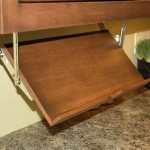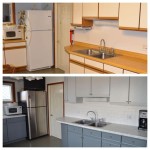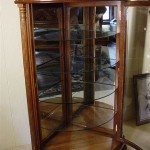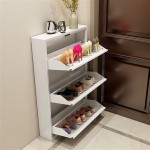Accessorizing Your Bathroom With a Wood Medicine Cabinet: Ideas and Considerations
The bathroom, often a smaller room within the home, requires careful consideration when selecting furnishings and accessories. Space is a commodity, and organization is paramount. A wood medicine cabinet provides a practical storage solution while simultaneously offering an opportunity to enhance the bathroom’s aesthetic. Selecting the right wood medicine cabinet involves evaluating factors ranging from size and style to wood type and functionality. This article explores various ideas and considerations related to accessorizing the bathroom with a wood medicine cabinet.
Choosing the Right Wood Type and Finish
The selection of wood for a medicine cabinet directly impacts its durability, appearance, and overall maintenance requirements. Different wood species possess unique characteristics that should be considered in relation to the bathroom's environment. High humidity and fluctuating temperatures necessitate a wood type that is resistant to moisture and warping.
Hardwoods vs. Softwoods:
Hardwoods, such as oak, maple, cherry, and walnut, are generally more durable and water-resistant than softwoods like pine or cedar. Oak, known for its strength and distinctive grain pattern, is a popular choice. Maple offers a smoother, more uniform appearance. Cherry provides a rich, reddish-brown tone that deepens over time. Walnut is a luxurious option with a dark, chocolate-brown color and intricate grain. Softwoods, while less expensive, may require more extensive sealing and finishing to withstand bathroom conditions.Considerations for Moisture Resistance:
Regardless of the wood species, proper sealing and finishing are crucial. A high-quality sealant will protect the wood from moisture penetration, preventing warping, cracking, and mildew growth. Polyurethane finishes are a popular choice, offering excellent water resistance and durability. Oil-based finishes provide a natural look and feel but may require more frequent maintenance. Paint, while offering a wide range of color options, must be applied carefully with a primer to ensure proper adhesion and moisture protection.Matching the Existing Décor:
The wood type and finish should complement the existing bathroom décor. Consider the color and style of the vanity, flooring, and other fixtures. A light-colored wood like maple can create a bright and airy feel in a small bathroom, while a darker wood like walnut can add warmth and sophistication. The finish should also coordinate with the hardware, such as faucets, towel bars, and light fixtures. For example, a brushed nickel finish on the hardware would pair well with a light-colored wood with a matte finish.Sustainable Wood Options:
For environmentally conscious consumers, sustainable wood options are available. Look for wood certified by organizations like the Forest Stewardship Council (FSC), which ensures that the wood is harvested responsibly from sustainably managed forests. Bamboo, although technically a grass, is another sustainable option that is naturally water-resistant and grows rapidly.Exploring Different Styles and Designs of Wood Medicine Cabinets
Wood medicine cabinets are available in a wide array of styles and designs, catering to diverse aesthetic preferences and functional requirements. From traditional to contemporary, and recessed to surface-mounted, the options are numerous. Selecting the appropriate style requires careful consideration of the bathroom's overall design and the user's specific storage needs.
Recessed vs. Surface-Mounted Cabinets:
Recessed medicine cabinets are installed within the wall, providing a seamless and space-saving design. This type of cabinet is ideal for smaller bathrooms where maximizing space is a priority. However, installation requires cutting into the wall and may involve rerouting plumbing or electrical lines, increasing the complexity and cost of the project. Surface-mounted cabinets are attached directly to the wall, making them easier to install. These cabinets protrude from the wall, taking up more space but offering potential design flexibility.Traditional Styles:
Traditional wood medicine cabinets often feature ornate details, such as raised panel doors, decorative molding, and antique-style hardware. These cabinets are typically made from hardwoods like oak or cherry and finished with a rich stain or paint. Traditional styles are well-suited for bathrooms with a classic or vintage-inspired design.Contemporary Styles:
Contemporary wood medicine cabinets tend to have clean lines, minimalist designs, and sleek hardware. These cabinets are often made from lighter woods like maple or birch and finished with a natural stain or paint. Contemporary styles are ideal for bathrooms with a modern or minimalist aesthetic.Shaker Styles:
Shaker-style medicine cabinets are characterized by their simple, unadorned design. They typically feature flat panel doors, clean lines, and minimal hardware. Shaker-style cabinets are versatile and can complement a variety of bathroom designs, from traditional to contemporary.Custom-Built Cabinets:
For those seeking a truly unique and personalized solution, custom-built wood medicine cabinets offer unparalleled design flexibility. A custom cabinet can be tailored to fit specific dimensions, accommodate unique storage needs, and incorporate personal design preferences. This option, however, is generally more expensive than purchasing a pre-made cabinet.Mirror Options:
The mirror is an integral part of a medicine cabinet. A plain, flat mirror is a classic and versatile choice. Beveled mirrors add a touch of elegance. Mirrored doors can be flat or feature decorative molding. Some medicine cabinets incorporate magnifying mirrors for grooming tasks. Consider the size and shape of the mirror in relation to the overall design of the cabinet and the size of the bathroom.Optimizing Storage and Functionality
Beyond aesthetics, the primary function of a medicine cabinet is to provide storage. Optimizing the storage capacity and functionality of a wood medicine cabinet is critical to maximizing its utility in the bathroom. Internal organization, adjustable shelves, and integrated features all contribute to a more user-friendly and efficient storage solution.
Adjustable Shelves:
Adjustable shelves are a key feature for maximizing storage flexibility. They allow users to customize the shelf height to accommodate items of varying sizes, from tall shampoo bottles to small medicine containers. Shelves made from glass or clear acrylic can improve visibility and make it easier to locate items.Internal Organization:
Consider the types of items that will be stored in the medicine cabinet and choose a design that offers appropriate internal organization. Small compartments or dividers can be used to organize small items like cotton swabs, makeup brushes, or contact lens cases. Deeper shelves can accommodate larger items like hair products or shaving cream. Consider adding small baskets or bins for containing loose items.Integrated Features:
Some medicine cabinets incorporate integrated features that enhance their functionality. Built-in lighting can provide illumination for grooming tasks. Electrical outlets or USB ports can be used to charge electric toothbrushes or other electronic devices. Some cabinets include a small pull-out shelf for applying makeup or shaving.Door Mechanisms:
The type of door mechanism can also impact the functionality of the medicine cabinet. Hinged doors are the most common type, but sliding doors can be a good option for small bathrooms where space is limited. Mirrored doors should be equipped with soft-close hinges to prevent slamming and reduce the risk of damage.Size and Depth:
The size and depth of the medicine cabinet should be carefully considered in relation to the bathroom's dimensions and the user's storage needs. A larger cabinet will offer more storage space, but it may also overwhelm a small bathroom. A shallow cabinet may not be able to accommodate larger items. Measure the available space carefully before selecting a medicine cabinet.Accessibility:
Ensure the medicine cabinet is installed at a height that is easily accessible for all users. Consider the height of the countertop and the average height of the individuals who will be using the cabinet. The cabinet should be mounted at a height that allows users to reach the contents without straining or bending over.By carefully considering the wood type, style, and functionality, homeowners can select a wood medicine cabinet that not only provides essential storage but also enhances the overall aesthetic of the bathroom. Through informed decision-making, the selection process can results in a bathroom that is both functional and visually appealing.

20 Bathroom Cabinet Ideas For Super Stylish Storage Schemes

Diy Medicine Cabinet Ideas

68 Best Bathroom Decor Ideas For A Budget Makeover

Vonhaus Bathroom Mirror Cabinet Oak Wood Effect With Adjustable Internal Shelf Handleless

25 Creative Bathroom Shelving Ideas And Racks For Small Spaces
:strip_icc()/erinwilliamsondesign-1-1dcfa7e5ebd34c138bbe7816d1a39ad3.jpg?strip=all)
23 Gorgeous Bathroom Cabinet Ideas For Any Style

Diy Medicine Cabinet With Mirror Shanty 2 Chic

Upgrade Your Bathroom With Clever Medicine Cabinet Ideas Signature Designs

Costway Wall Mounted Bathroom Mirror Cabinet Wooden Storage Cupboard W Double Doors

Bathroom Storage Design Ideas Maximize Your Space With Style Decorilla Interior
Related Posts








